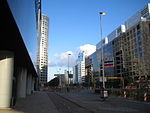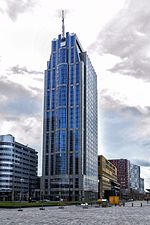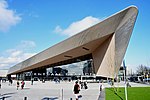The Ocean Cleanup

The Ocean Cleanup is a nonprofit engineering environmental organization based in the Netherlands, that develops technology to extract plastic pollution from the oceans and intercept it in rivers before it can reach the ocean. After initial testing and prototyping in the North Sea they deployed their first full-scale prototype in the Great Pacific Garbage Patch. It ran into difficulty after two months and was towed to Hawaii for inspection and repair. In June 2019, their second prototype system was deployed. They also deployed their river technology, the Interceptor, in two locations in 2019, revealed the project publicly in October 2019, and deployed another in 2020. In 2021 they announced that the prototype testing of System 002 was successful.The organization conducts scientific research into oceanic plastic pollution. It was founded in 2013 by Boyan Slat, a Dutch-born inventor-entrepreneur of Croatian and Dutch origin who serves as its CEO. It has conducted two expeditions to the North Pacific Gyre, the Mega Expedition and the Aerial Expedition, and continues to publish scientific papers. Their ocean system consists of a floating barrier at the surface of the water in the oceanic gyres, that collects marine debris as the system is pushed by wind, waves and current, and slowed down by a sea anchor. The project aims to launch a total of 60 such systems, and they predict this capability could clean up 50% of the debris in the Great Pacific Garbage Patch in five years from full scale deployment.In late October 2019, The Ocean Cleanup announced a new initiative, the Interceptor, to tackle the trash problem closer to the source, with plans to prevent 80% of riverine trash coming from 1000 rivers worldwide.
Excerpt from the Wikipedia article The Ocean Cleanup (License: CC BY-SA 3.0, Authors, Images).The Ocean Cleanup
Batavierenstraat, Rotterdam Centrum
Geographical coordinates (GPS) Address Nearby Places Show on map
Geographical coordinates (GPS)
| Latitude | Longitude |
|---|---|
| N 51.920833333333 ° | E 4.4683333333333 ° |
Address
Batavierenstraat 31
3014 JH Rotterdam, Centrum
South Holland, Netherlands
Open on Google Maps










